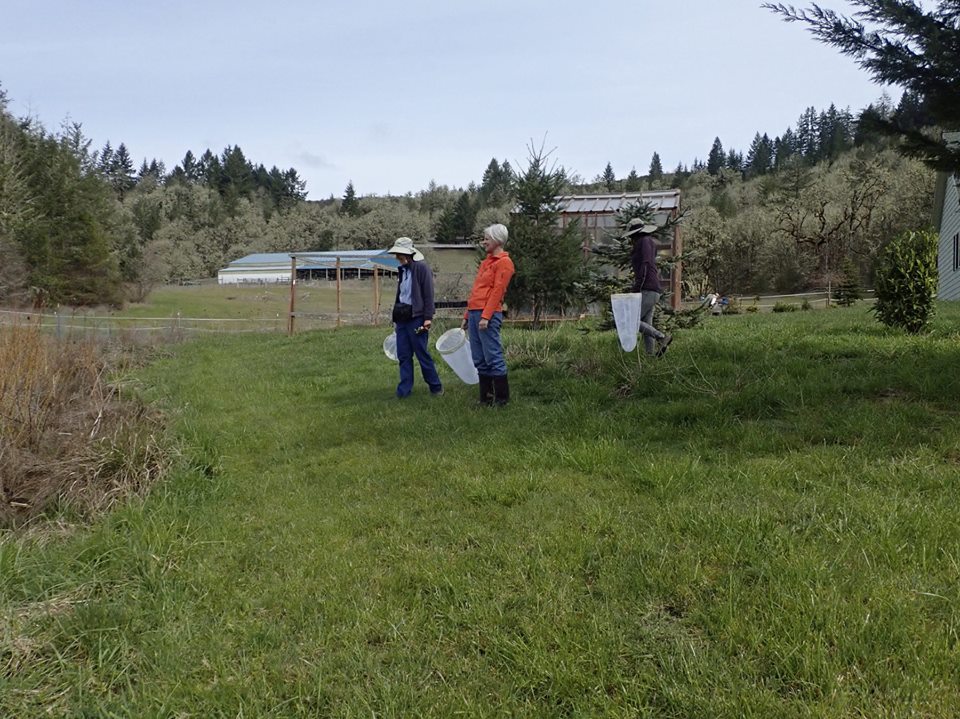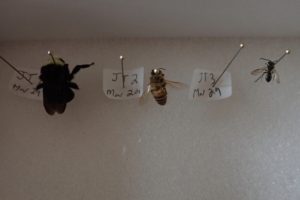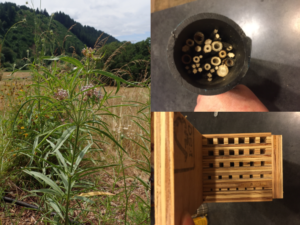Oregon Native Bee Atlas

Bees need our help. Just five years ago Oregon saw a major bee die off, and pollinator populations continue to decline around the world. “We have more species of bees in the Pacific Northwest than all the states in east of the Mississippi,” says Andony Melathopoulos, a pollinator ecotoxicologist with OSU. “We really want to protect that endowment.”
The Oregon Bee Project, a partnership bolstered by OSU Extension, Oregon Department of Agriculture, and Oregon Department of Forestry, is hard at work to prevent another die-off. The program engages communities about their local bees, provide diagnostic services for beekeepers to recognize emergent diseases, and provides training to pesticide applicators about best practices to protect bees while spraying – 1,500 applicators were trained last year. “What we’re trying to do,” says Melathopoulos, “is really shore up all the initiatives that are happening already in the state to protect pollinators.”
 One of the project’s groundbreaking efforts is the compilation of the first-ever atlas of Oregon’s bee species. The size, diversity, and distribution of Oregon’s bee populations is still not fully understood. Up until now, monitoring at three sampling sites has been used to characterize bee populations across Oregon state. OSU has trained volunteer citizen scientists around the state to collaborate gathering data to complete the Oregon Native Bee Atlas, starting this season. This atlas will be an essential and continued tool to characterize the health, abundance distribution, and diversity of bees in the state. Periodic samplings will reveal population trends over time and empower smarter management and conservation.
One of the project’s groundbreaking efforts is the compilation of the first-ever atlas of Oregon’s bee species. The size, diversity, and distribution of Oregon’s bee populations is still not fully understood. Up until now, monitoring at three sampling sites has been used to characterize bee populations across Oregon state. OSU has trained volunteer citizen scientists around the state to collaborate gathering data to complete the Oregon Native Bee Atlas, starting this season. This atlas will be an essential and continued tool to characterize the health, abundance distribution, and diversity of bees in the state. Periodic samplings will reveal population trends over time and empower smarter management and conservation.
One Bee Atlas volunteer is Jeanie Taylor, an avid naturalist, horticulturalist, and owner of 20 acres of forest replete with Oregon White Oak and Douglas-fir in Yamhill County that is FSC-certified through NNRG’s group certificate. Taylor is part of a Bee Atlas team that will be collecting bees every two weeks during the dry season in Yamhill County, to create a local reference collection and add to the statewide atlas. Taylor reports that during their first excursion last Thursday, flowers were still scarce but some bees were collected, allowing the team to practice netting, sampling, and pinning techniques.
As Taylor puts it, “it’s important for farmers and gardeners to know how to protect and benefit native pollinators for ecosystem health and pollination services.” There are many little things we can all do to protect struggling pollinator populations:
- Start learning to identify native Northwest bees.
- If you live in Oregon, report any anecdotal bee sightings to the bee atlas through the iNaturalist app.
- Reduce or avoid pesticide applications, especially insecticides. If unavoidable, always spray or inject herbicides when plants are not flowering. Consider alternate weed and pest control methods.
- Create nesting habitat for bees – you can bundle up hollow stems in a PVC pipe and mount them, or drill holes in a block and line them with straws for easy cleaning. You can also buy bee nest boxes. Be sure to maintain nesting habitat and keep it clean – bees in groups are particularly susceptible to disease, parasites, and predators.
- Plant native seedlings that pollinators love and need, including plants that bloom at different times so there are flowers from spring to fall. Plant caterpillar host plants appropriate to your site.

Left: Jeanie Taylor’s hedgerow provides habitat and diverse flowers to sustain diverse types of pollinators. Right: Bee nesting boxes that Taylor made herself provide low-cost and effective habitat, especially when properly maintained to prevent disease.

Leave a Reply